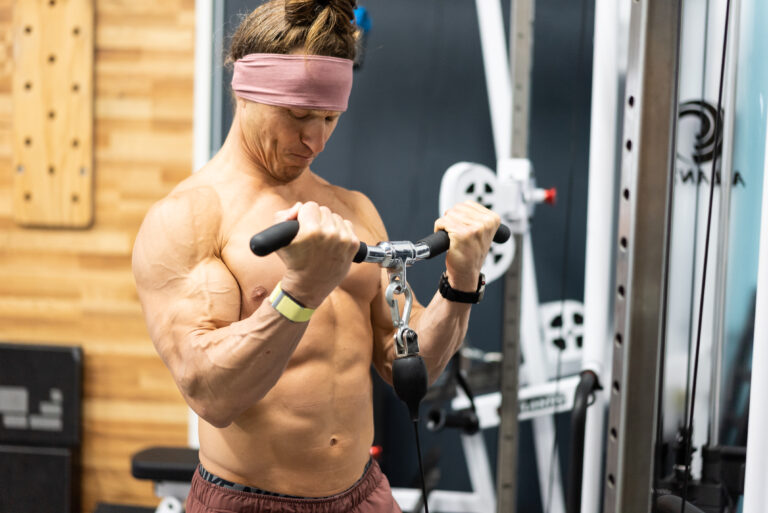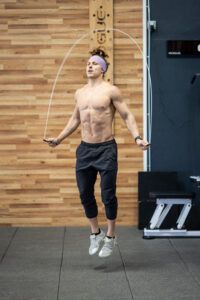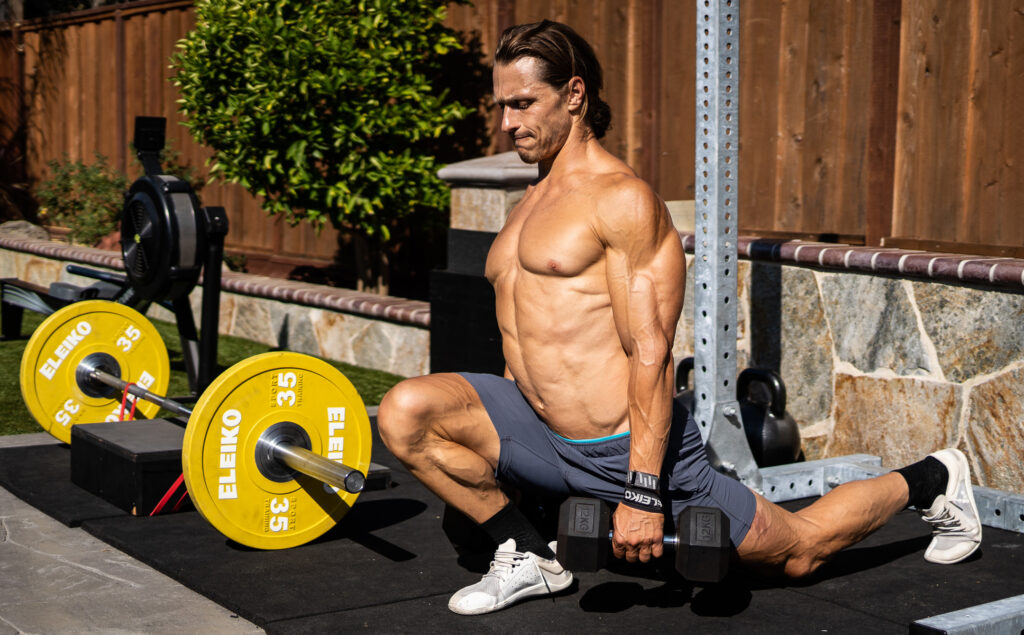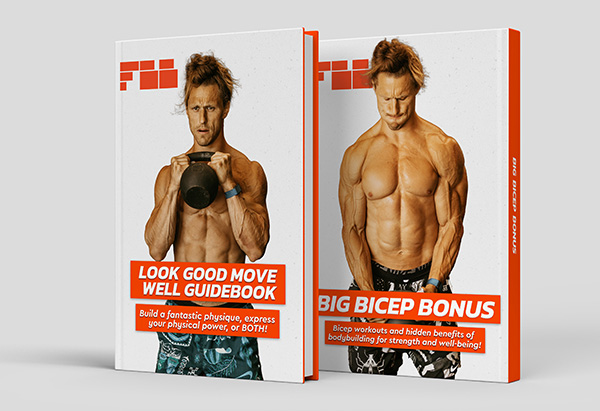Workout Splits: 5 Days, 4 Days, 3 Days

How can I plan my workouts for a 5 day split, a 4 day split, and a 3 day split?
We all have crazy lives and want to make the most of our time in the gym. But when it comes to planning, it can be hard to prioritize. How many days of weights vs. cardio, or a combo? How to squeeze everything your heart desires into one magnificent weekly schedule?
So today I present:
THE ULTIMATE GUIDE TO PLANNING WORKOUTS
Keep in mind, one of the benefits of a program like Perform is I’ve done it all for you. The training is balanced throughout the week over 4 or 5 days depending on which track you follow. Plus there’s optional active recovery on rest days, and bonus extra cardio workouts. (Or just go for a walk.)
But many of you, myself included, don’t always fit perfectly into this schedule. We have to tweak things here and there to optimize our fitness experience. And it takes knowing a good framework to make sure your training works as intended.
HOW MANY DAYS OF WEIGHTS VS. CARDIO?
LIFTING WEIGHTS IS THE MOST IMPORTANT PART OF TRAINING
Weight training builds skeletal muscle and improves our functional capacity in life. (And helps you look good too.)
Over the years I didn’t always do focused aerobic work (i.e. steady state cardio). There were even more years that I didn’t do metabolic conditioning (i.e. CrossFit Style circuits). However, at age 38 I’ve concluded that these disciplines should be included in our lives in some form or another.
How you approach weights and cardio can be effective in a variety of ways. If you lift hard consistently, and perform cardio consistently, you are well on your way to fitness, health, and body composition success.

WHAT’S AN EFFECTIVE DOSE OF WEIGHT TRAINING?
Over the 12 years I’ve been coaching, the sweet spot is 3-5 days per week. You can get away with 2 or 6, but problematic issues creep in. You’re either pushing with that extra day or not quite getting enough. For this reason Perform is 4 or 5 days per week.
One of the pitfalls I saw in my years of coaching CrossFit to the masses was an infatuation with the Metcon (metabolic conditioning). People loved to do weights/cardio/bodyweight circuits each and every day at high intensity. But they didn’t fall in love with the weight lifting style of old school bodybuilding and powerlifting. (3 sets of 10-12 reps, 5 sets of 6-8 reps, etc). It is the latter that we need to have in our workout programs 3-5x per week.
THE PURPOSE OF METCONS
The beauty of the CrossFit metcon was introducing people to the concepts of intensity and effort. These key ingredients make weight training magical. Without them, 3 sets of 10 bench press can seem boring and ineffective. And without the diversity of movement and variance in CrossFit, many people couldn’t get behind doing the same things weekly for a long time. Let’s face it, in today’s world, we expect novelty.
So this is where dosing metcons inside of a resistance training program is valuable. It reminds people what intensity is supposed to feel like. It also adds plenty of variety to an otherwise simple model of linear progression in weight training.
And if metcons are designed to bias weights and more controlled high quality lifts and contractions, then you won’t add unnecessary risk. I have developed Functional Pump Conditioning workouts so you get the best of the metcon, right alongside evidenced based weight training progressions.
HOW MANY METCONS PER WEEK?
Technically you need ZERO. Lift weights progressively and eat right. Get in some general activity or low-intensity cardio each day. If you do these things, the vast majority can look, feel, and perform exactly how they want to in life.
Including thoughtful Functional Pump Conditioning workouts is highly impactful for keeping people consistent and loving their training. And they get some needed cardio all in one section. This is why we include these finishers in all our training tracks.
HOW MUCH CARDIO PER WEEK?
YOU SHOULD DO SOME DAILY
Low intensity steady state cardio can be as simple as walking. Aiming for approximately 10-12k steps per day is equivalent to 1-1.25 hours of walking. That can look like three 15min walks each day with some other household chores and activity. Walk to and from your car, shop, go up and down stairs at work, etc.
That amount of steps will not happen unintentionally unless you work a very active job. Think nurse, waiter, delivery driver, etc. So I like a step target as a baseline for people to check the box on cardio.
While this bare minimum of cardio is terrific for most, it won’t elicit all the health and cognitive benefits of more structured cardio. Since most of you are looking for a little more edge on health, performance, and aesthetics, here’s my recommendation. Get 3-5 sessions of cardio a week that put you in an elevated HR zone for about 30 mins per session. If you can knock out 90-150 mins of cardio each week, that yields added cognitive, heart, and energy balance benefits.
WHERE I'M AT NOW

DO I EVER FEEL ACHES AND PAINS NOW?
ure I do. They are mostly very low-intensity pains and aches. They are like little signals to my brain that I’m neglecting one of the pillars that I have outlined here. If pain gets more severe, then it means I’ve been neglecting one or more of these areas for a longer period of time. In either case I have to be listening to my body and recognize that it time to recommit to these principles.
But more often than not these days I feel good. I don’t have pain and I don’t train with a constant fear that something is going to pop or tweak. I have a very supportive nutritional approach. I have checked my EGO most days and train for Quality.
I follow training principles that reinforce good movement. I use loading approaches that make lifting hard and intense without putting maximum weight on my body. And finally, I learn from others constantly about what it means to prepare and maintain healthy tissue for the long haul.
The end result is getting to move the way I want to move, in just about any scenario I find myself in. And having the ability to full express my physicality without fear of injury and set back.
SO WHAT’S THE SECRET?
Well, it isn’t a secret now. Dedicate to these themes, listen to your body, and know when you need to double down on these commitments. Make sure you have the capacity to do what you love, whenever you want, injury free.
RESILIENCE WORKOUTS
Now let’s take those ideas and give you some hands-on ways to try them out for yourself. Here at Functional Bodybuilding we always like to encourage you to learn by doing. So here is how to build stability, strength, and length into your tissues and joints. This is the recipe to become a balanced athlete that is more resilient to injuries.
The goal with strength training that prioritizes physical resilience:
Train the muscles and joints to an adequate range of motion for the activities you want to do in life (Mobility Training)
Train the muscles and joints to be able to produce force through the functional ranges you want to use in life (Strength Training)
Length and Strength meet in a single concept called Stability.
Joint stability means being able to control your joint movement with a full range of motion. And it’s built through the soft tissue and muscles that surround and support the joint. This stability is what keeps your joints safe.
I’ve known this for years, well before I was a fitness coach, and well before any formal education on the subject. Even when I was younger, before I had sustained my college injuries from overtraining, I knew that strength training and mobility training went together.
I felt the benefit of getting stronger through a full range of motion. And I saw what that did to make my joints stronger and more stable. I recall learning how to Romanian Deadlift correctly, and after months I could finally put my palms on the ground in a forward fold. I felt strong and stable, rather than fragile and weak, when I was down there.
My good friend Ben Patrick (Knees Over Toes Guy) helped me reinforce strength and mobility training in my modern day training applications. The concepts that he used to heal his knees, and make them some of the most resilient on the planet, influenced Perform greatly.
Here is some stability training from Perform to try:

Lower Body Stability
Perform PUMP Example
Every 60sec x 9 sets (3 per exercise):
1st minute – Kettlebell Jefferson Curl @2020 Tempo x 4-6 reps (2 second lowering
2nd minute – Left leg Hand-Supported Suitcase Knee Over Toe Split Squat @21X0 Tempo x 6-8 reps
3rd minute – Right leg Hand-Supported Suitcase Knee Over Toe Split Squat @21X0 Tempo x 6-8 reps
Intention – Make sure you pause in the split squat for 1 second at the fully stretched position. Move with control on every set. The total time for each movement should take around 30sec, leaving you with 30sec to rest before the next set. Aim to hit approximately 6-7/10 RPE on each set.
Coach Notes
This combination of movements takes you through a very large range of motion for the hips, knees, and back.
You will get a full knee bend, a big hip extension stretch, and a full posterior chain flexion and extension contraction.
Movements like this are meant to be performed at moderate to lighter loads. This means more control so you can explore your full range of motion and build strength in these positions.
The time under tension (TEMPO) for each of these movements yields about 30 seconds of work and 30 seconds of rest for 9 minutes. This leads to a metabolic stress on the muscle that is useful for building a pump and driving hypertrophy.
Speed, Strength, & Skill
PERFORM Example
PART 1
Every 3mins x 4
Power Clean 1.1.1.1.1 (quickly reset between each rep)
After your 5th rep, immediately move into:
Deficit Strict Handstand Push Up Negative or Strict HSPU Negative @ 41A1 x 5reps
PART 2
3 Sets
Dumbbell Low Incline Bench Press; 32X1; 6-8reps
Rest 2mins
Coach Notes
The first SuperSet of Power Cleans and Handstand Push Ups combines a Speed Strength exercise in the Power Clean with a Skilled exercise. This particular prescription emphasizes stability. Lowering your Handstand Push Up to a count of 4, you will pause at the bottom in a stretched position. This trains the shoulders through a long range of motion with lots of bodyweight strength tension and control.
In Part 2 of this workout, this Bench Press variation maximizes range of motion. The low incline (10-15 degree bench) Bench Press allows a more complete and full stretch of the chest. Additionally, the use of dumbbells allows us to pull the load further down our sides for a more dramatic stretch under tension. The tempo dictates a 2 second pause at the bottom of each rep. You’ll also lower each rep for 3 seconds. These slow speeds and pauses are a recipe for building stability in the shoulder and pecs.
I follow training principles that reinforce good movement. I use loading approaches that make lifting hard and intense without putting maximum weight on my body. And finally, I learn from others constantly about what it means to prepare and maintain healthy tissue for the long haul.
The end result is getting to move the way I want to move, in just about any scenario I find myself in. And having the ability to full express my physicality without fear of injury and set back.
SO WHAT’S THE SECRET?
Well, it isn’t a secret now. Dedicate to these themes, listen to your body, and know when you need to double down on these commitments. Make sure you have the capacity to do what you love, whenever you want, injury free.
TRY Perform 2 WEEKS FREE
Perform takes the challenge out of creating workout splits. Try a free two week trial for four tracks of training, plus bonus ebooks.
MORE RESOURCES

